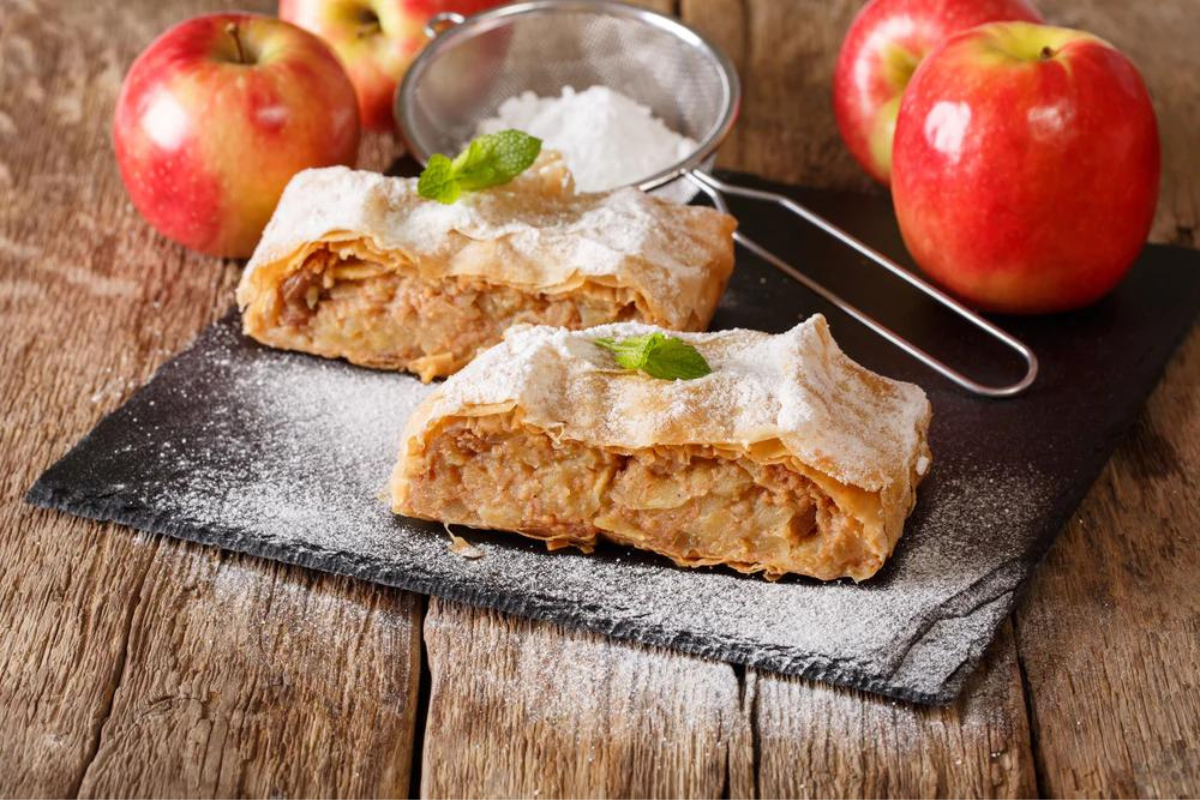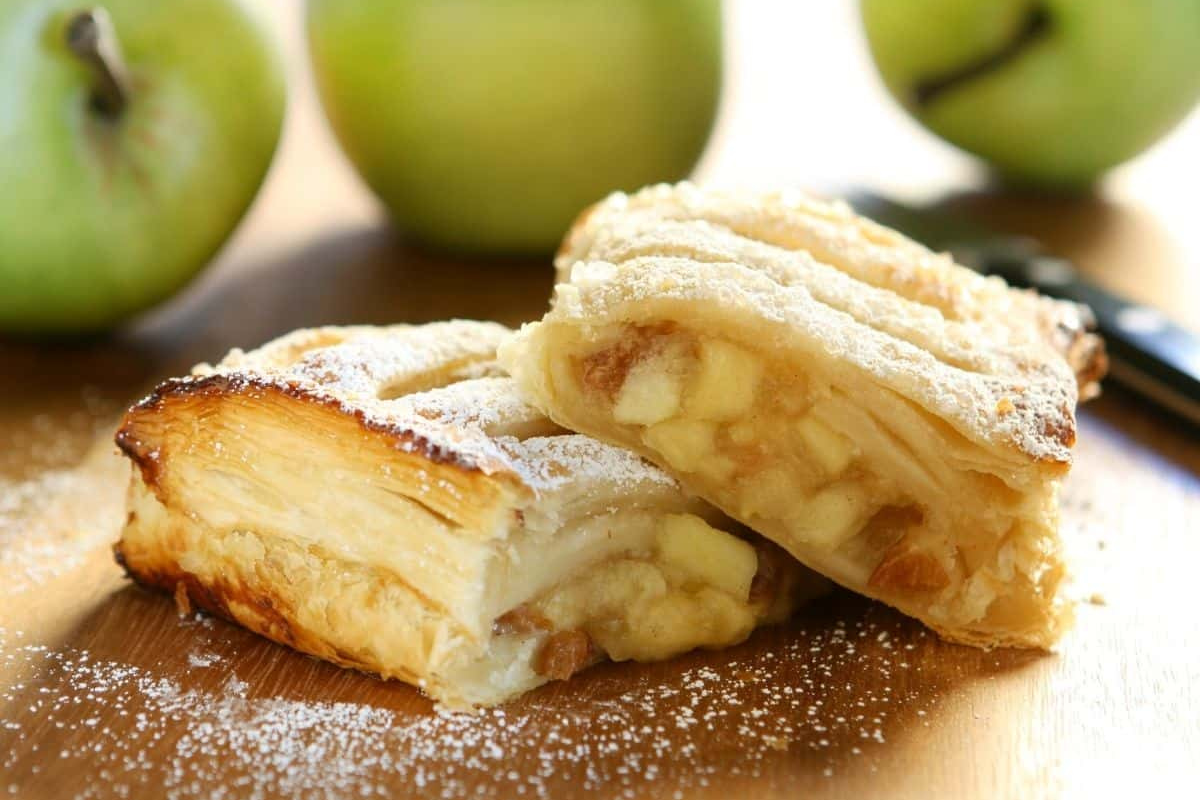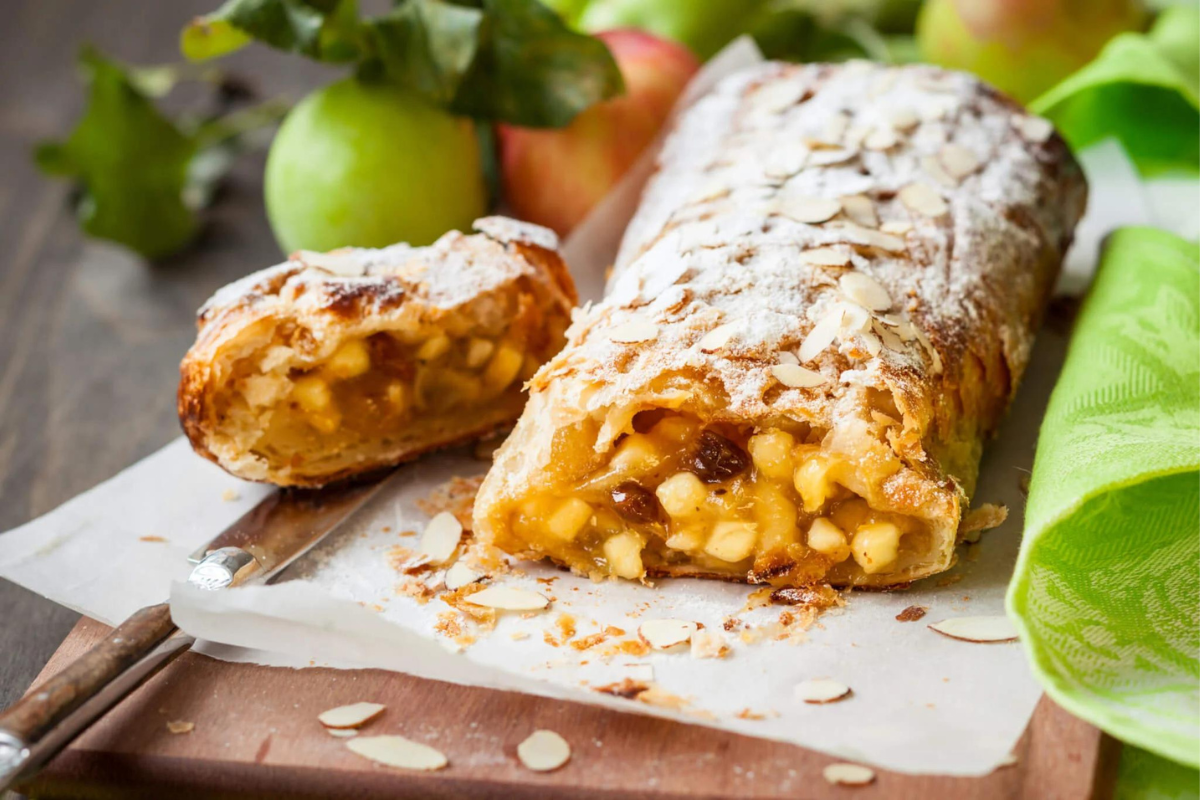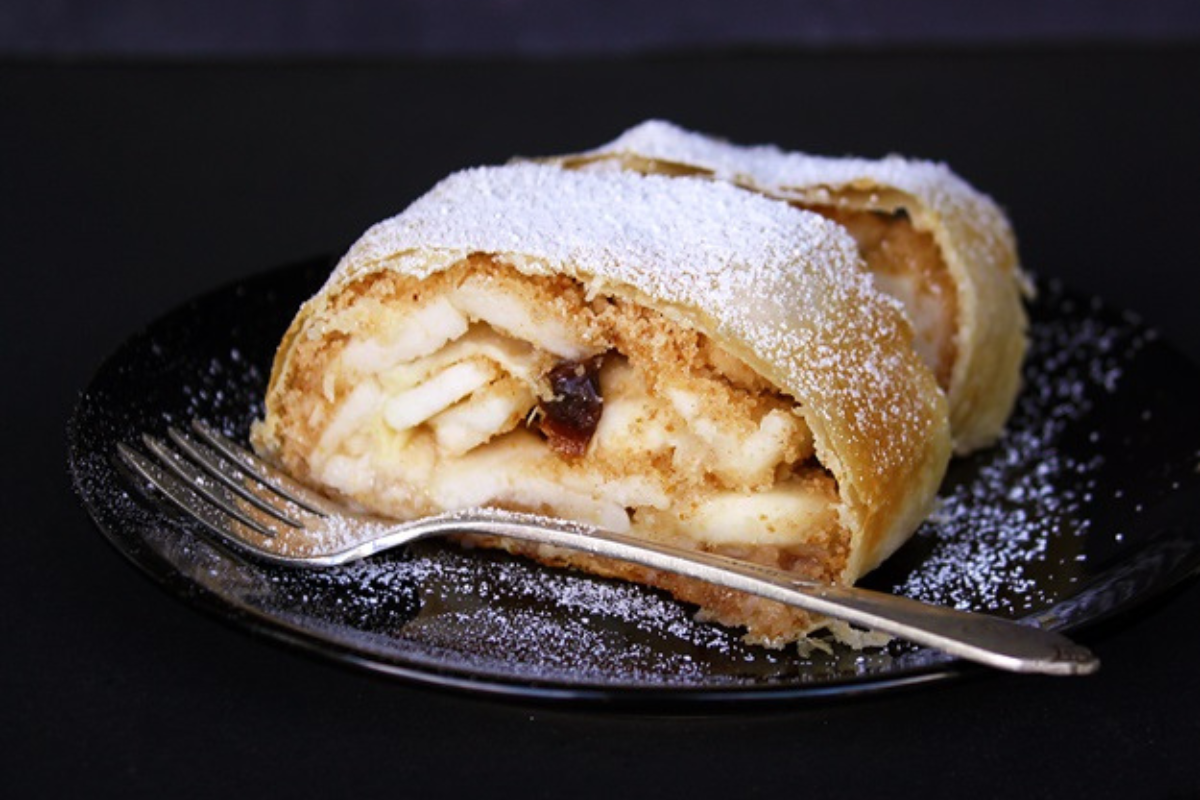Apple strudel, the iconic layered pastry filled with sweet, spiced apples, is more than just a delicious dessert. It’s a symbol of Austrian culinary heritage, a testament to centuries of cultural exchange, and a taste of Viennese comfort food.

Photo: Home Buddy
Nestled amidst the snow-capped peaks and charming villages of Austria lies a culinary treasure: the apple strudel. This iconic dessert, often mistaken for German, proudly boasts Austrian roots, claiming a place not just on dessert menus but also in the hearts of its people. From its intriguing origins to its delectable flavors and cultural significance, apple strudel weaves a tale of history, tradition, and pure culinary delight.
While the definitive origin of apple strudel remains shrouded in some mystery, the earliest documented evidence points towards Austria. The oldest known recipe, dating back to 1696, resides in a handwritten cookbook in the Vienna Town Hall Library. This recipe for a milk strudel suggests the existence of earlier variations, perhaps filled with other ingredients.
However, the concept of a layered pastry filled with sweet or savory ingredients finds its roots in ancient civilizations. Historical records mention similar dishes in ancient Greece, Rome, and even the Middle East. The resemblance of the strudel’s thin pastry layers to Turkish baklava hints at potential cultural influences that may have shaped the creation of this Austrian classic.
The art of strudel making: A labor of love
Crafting the perfect apple strudel is an art form passed down through generations. The heart of the dish lies in the strudel dough, a marvel of elasticity and thinness achieved by skilled hands. Bakers meticulously stretch the dough until it is translucent, resembling a delicate sheet of paper. This feat requires patience, practice, and a deep understanding of flour, water, and the delicate dance of gluten development.

Photo: The London Economic
Once stretched to perfection, the dough is generously brushed with melted butter, creating a base for the filling. The traditional filling features tart apples, typically Granny Smith or Golden Delicious, sliced thinly and tossed with a mixture of sugar, cinnamon, breadcrumbs, raisins, and sometimes a touch of lemon zest. This symphony of sweet and tart flavors, interspersed with the crunchy texture of toasted breadcrumbs, forms the soul of the strudel.
With a practiced hand, the baker skillfully rolls the dough, encasing the filling in a snug embrace. The strudel is then brushed with more butter and sprinkled with sugar, ready for its journey into the oven. The transformation within the oven is magical. The strudel crisps on the outside while the apples release their juices, creating a tender and flavorful filling. The sugar caramelizes, leaving a golden brown crust that is both visually stunning and immensely inviting.
Beyond the plate: Strudel’s cultural significance
Apple strudel transcends the realm of mere dessert. It is deeply woven into the fabric of Austrian culture, a symbol of home, comfort, and shared experiences. Traditional Viennese cafes, with their ornate interiors and lingering scents of coffee and pastries, are havens for savoring a slice of warm apple strudel alongside a cup of strong coffee.
During holidays and family gatherings, the aroma of baking strudel fills homes, creating a sense of warmth and togetherness. Strudel recipes are cherished family heirlooms, passed down through generations, each variation reflecting personal preferences and culinary heritage.

Photo: Days of The Year
As the world evolves, so does the world of culinary creations. Modern interpretations of apple strudel reflect this evolving landscape. Chefs experiment with new flavor combinations, incorporating different fruits, nuts, and spices into the traditional filling. Vegan options, featuring alternative flours and dairy-free substitutes cater to dietary preferences.
Despite these variations, the essence of apple strudel remains. It continues to be a beloved symbol of Austrian culture, enjoyed not only within its borders but also across the globe. With every bite, one experiences a taste of history, tradition, and the enduring legacy of Austrian culinary ingenuity.
Apple strudel is more than just a dessert; it is a cultural experience. It embodies the meticulous craftsmanship, rich history, and warm hospitality that lie at the heart of Austrian identity. So, the next time you savor a slice of this delectable treat, take a moment to appreciate the journey from its ancient origins to its cherished place in Austrian culture and beyond.
Embracing differences: Variations on a classic
While the classic Viennese apple strudel reigns supreme, the journey of this pastry across borders has led to a beautiful tapestry of variations, each reflecting the unique cultural influences and local ingredients of different regions.
In countries like Hungary and Romania, the focus sometimes shifts from apples to other fruits. Hungarian “Túrós rétes” features a sweet curd cheese filling, often accompanied by raisins or plums. Romanian “Strudel cu mere si nuci,” a kind of apple and walnut strudel, incorporates the richness of walnuts into the apple filling, adding a delightful textural contrast.
Spices play a crucial role in enhancing the flavor profile of strudel. German Apfelstrudel often incorporates cardamom alongside the usual suspects like cinnamon and cloves, adding a subtle floral aroma. Polish “Szarlotka” deviates from the traditional flaky dough, utilizing a crumbly dough base and sometimes adding a touch of ginger to the apple filling for a touch of warmth.

Photo: Little Vienna
In Jewish communities across Central and Eastern Europe, apple strudel often incorporates raisins into the filling, reflecting the influence of Middle Eastern cuisine. This variation, referred to as “Apfelstrudel mit Rosinen,” an apple strudel with raisins in German, serves as a delicious reminder of the rich cultural exchange that shaped the dish’s evolution.
The spirit of innovation hasn’t left apple strudel untouched. Modern variations explore a range of flavors and textures. Chocolate chips can be incorporated into the apple filling, or the pastry can be drizzled with caramel or chocolate sauce. Some variations even explore savory fillings like spinach and cheese, showcasing the versatility of the strudel concept.
Exploring these variations allows us to appreciate the adaptability of apple strudel and its ability to integrate seamlessly into different cultures, adding a unique touch to a beloved classic. As we continue to explore culinary traditions, these variations serve as a testament to the ever-evolving nature of food and the beauty of cultural exchange.

